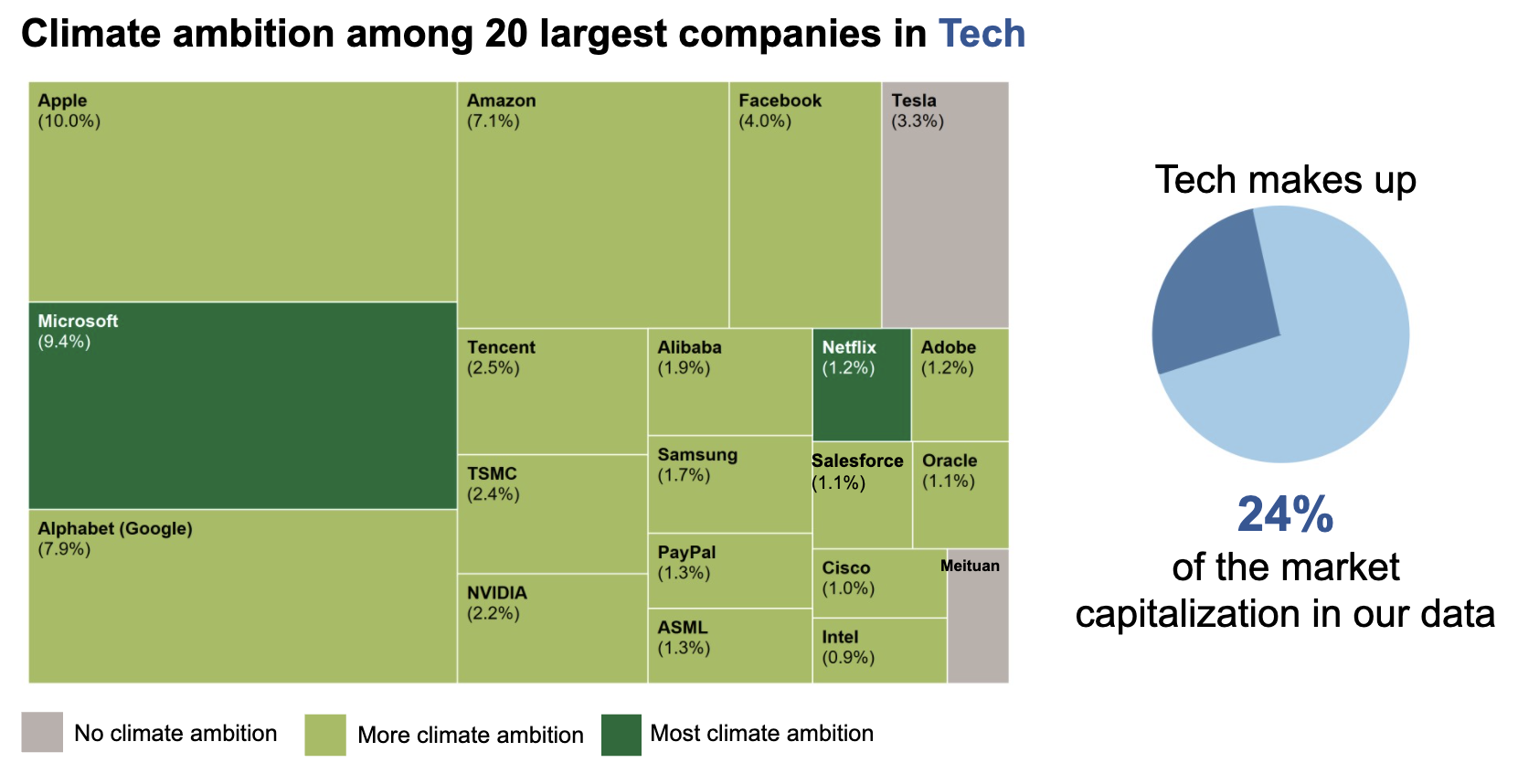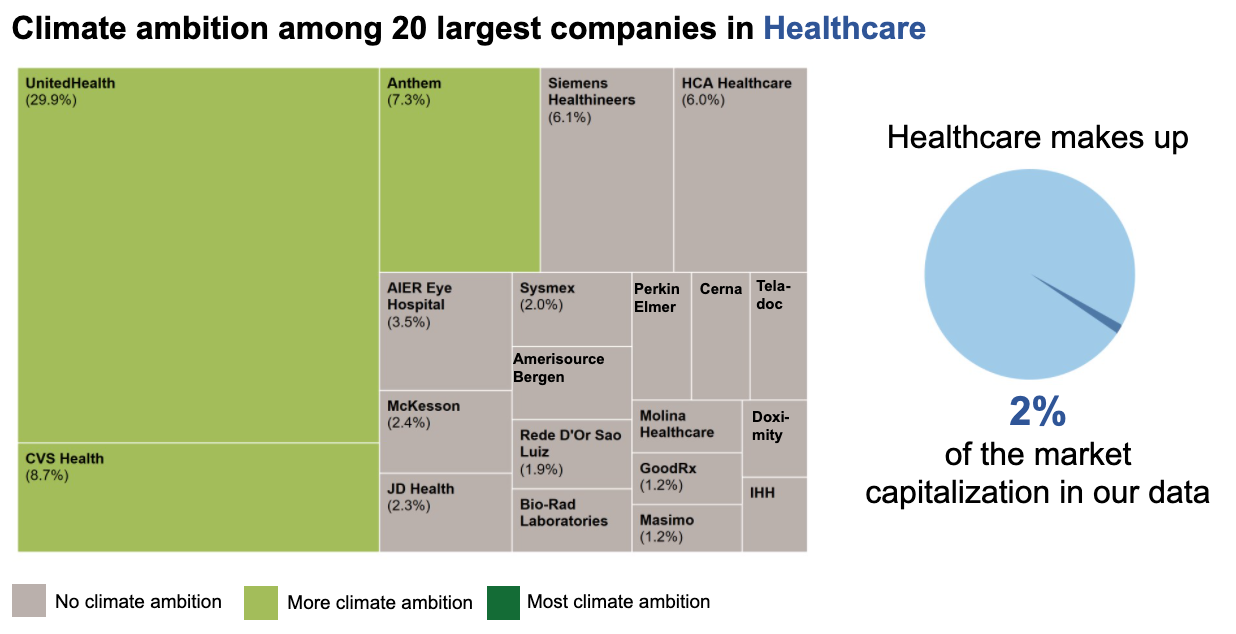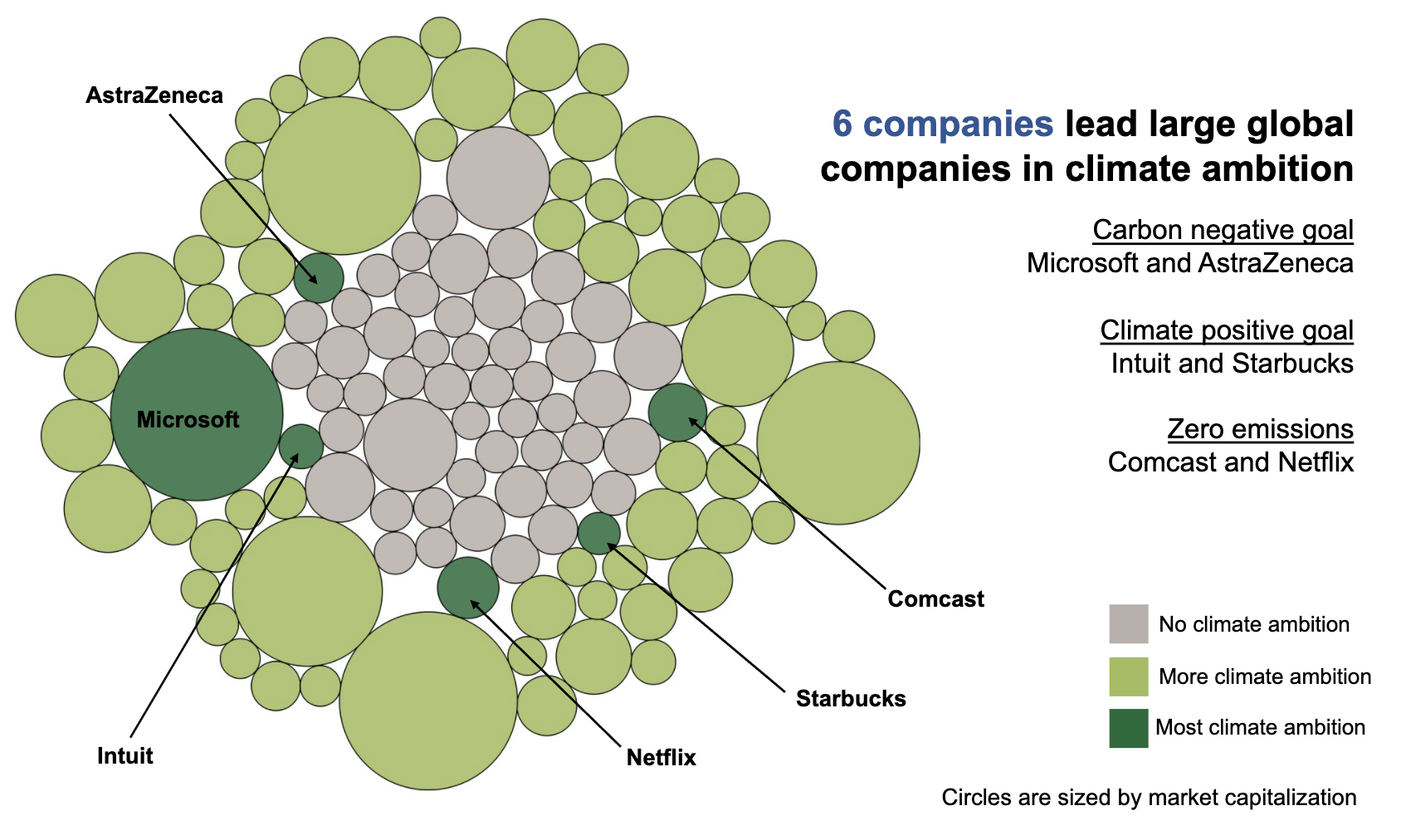Office skyscraper Reflection in the sunlight. Paris, France

What We’re Learning about Corporate Climate Ambition
Although COP26 furthered global climate ambition, its outcomes failed to fully meet the aspirations of many leaders and activists calling for more urgent action. Fortunately, national governments are not the only actors that can undertake ambitious actions to achieve climate goals. Glasgow also signaled unprecedented levels of climate action commitments from investors and businesses that can drive real economy transformation. Indeed, private sector actions could be the critical factor to keep 1.5°C alive in just the next few years. So, what have corporate actors committed to, and what do these commitments mean?
To answer these questions, we gathered and analyzed data from Race to Zero (a global campaign under the UNFCC that mobilizes a coalition of net-zero initiatives representing public and private sector actors) and the Net Zero Tracker (a global resource that tracks net-zero pledges by nations, companies, and other entities). Our analysis focused on direct carbon dioxide emissions, though many corporate targets include full value chain emissions reductions and other greenhouse gas emissions.
We analyzed climate action pledge data as of October 15, 2021, from 3,000 of the largest global publicly traded companies, and categorized them by climate ambition:
- “Some climate ambition” includes companies that have targets that reduce emissions, including via carbon offsets, by 2050. These targets include net-zero commitments, 1.5°C targets, climate/carbon neutrality, absolute/intensity-based emissions reductions, and science-based targets (not necessarily affiliated with the Science Based Target Initiative).
- “Most climate ambition” includes companies that have explicitly committed to cutting down operational emissions to zero (e.g., zero emissions, zero carbon targets) or to capturing more carbon than they emit (e.g., climate positive, carbon negative targets).
Here’s what we learned:
-
Nearly half of the largest publicly traded companies have committed to reducing emissions, but most need to ramp up their ambition to make any significant impact on climate.
The recent increase of corporate climate commitments provides hope that the private sector will help the world limit warming to 1.5°C. However, according to the data we compiled, only 4 percent of the 3,000 largest public companies have made commitments to completely eliminate direct CO2 emissions from operations. The other 43 percent of companies with targets can participate in carbon offset schemes, such as tree planting, which does not equate to a reduction in operational emissions. In other words, most companies do not actually need to change their behavior to meet their current emissions goals. And, climate commitments do not equal climate action, especially in the short term.
-
The technology sector is leading the way in setting climate targets.
The highly competitive and consumer-facing technology sector is a clear leader in climate ambition. Industry giants have been early movers in initiatives such as the Clean Energy Buyers Alliance and The Climate Pledge, catalyzing ambition throughout the sector. As technology companies and associated data centers continue to grow, RMI encourages these companies to hit their climate goals and set even more ambitious targets.
The majority of large companies in the tobacco, media, and electricity sectors have also committed to climate targets. However, this does not necessarily mean the sectors are entirely on board. Tobacco’s ambition is driven by a few large companies that dominate nearly 60 percent of the market and have set carbon-neutral and net-zero goals. Comcast, which controls 42.9 percent of the market share in the media and press sector, committed to zero emissions, pulling the entire sector up in this global ranking. On the contrary, the many actors in the electricity sector are generally impressive, with more than half of the sector committing to neutrality or net-zero targets.

-
Healthcare and heavy transit sectors (aircraft manufacturing, airports, and ports) rank lowest in climate commitments.
The three largest companies in the healthcare sector, United Health, CVS, and Anthem, have set climate targets, but they are not what we consider ambitious. The rest of the health care sector has not yet set targets. Healthcare companies will need to step up their ambition, especially now that 40 countries, including the United States, Britain, and Germany, have pledged to cut healthcare emissions. All eyes will be on healthcare in the coming months as the world continues to grapple with the COVID-19 pandemic.
Large companies in the aircraft manufacturers, airports, and port operations sectors have not yet set climate targets or goals. Aviation and shipping are notoriously hard-to-abate sectors, requiring alternative fuels and advanced technology deployment to mitigate future carbon emissions. But, done purposefully, transforming tough sectors can create new business opportunities and be profitable. Initiatives such as Poseidon Principles and the Sustainable Aviation Buyers Alliance are already capitalizing on this opportunity and catalyzing climate ambition in these sectors.
-
Household brand names lead companies valued over $100 billion in climate commitments.
Microsoft and AstraZeneca have committed to being carbon-negative, Intuit and Starbucks to climate-positive, and Comcast and Netflix to zero-emissions goals. These leading consumer-facing businesses have integrated sustainability into their business models and serve as examples of meaningful decarbonization targets in their respective sectors.
-
Most companies do not publicly disclose emissions data, even if they have set a climate target.
Accurate and accessible corporate data is the first step in understanding and mitigating emissions from the private sector. With a myriad of standardized reporting tools and metrics available, there is no excuse for companies to conceal or misreport emissions data. Transparency and tracking are ways to build trust behind corporate ledgers and actions. As climate activist Vanessa Natake put it when she spoke to COP26 delegates, “It is hard to believe business and finance leaders when they have not been trustworthy in making their pledges a reality…We desperately need you to prove us wrong.”
-
Financial institutions are rapidly scaling net-zero commitments, but much work remains.
Of the largest 3,000 publicly traded companies, 17 percent are financial institutions (including banks, investment firms, and financial services). These companies control the purse strings of the private sector, making them critical to all sector transitions. A growing number of financial institutions are stepping up their climate ambition under the umbrella of the Glasgow Financial Alliance for Net Zero and other initiatives. While these pledges show progress, net-zero commitments do not guarantee decarbonization without improvements in portfolio monitoring and evaluation. New investment processes, mandates, and impact-focused strategies are needed to ensure capital flow is contributing to decarbonization. Resources such as the Climate AIR toolbox can help financial institutions identify and access the relevant tools, frameworks, and platforms to measure and report their climate-related alignment, impact, and/or risk. If we are aiming for a more sustainable economy in the near term, ambitious 1.5°C-aligned commitments and action from finance must start now.
When it comes to predicting and assessing the real economy implications of corporate climate action commitments, there is still a lot of work to be done. Energy analysts and modelers now regularly provide assessments of the future implications of national climate action pledges, but most are just beginning to consider how to track and assess the implications of corporate pledges. RMI is working with partners to develop tools to undertake such analysis and support its integration into global energy systems models. New systems for near-real-time data acquisition and reporting are evolving quickly, including the emergence of the Climate TRACE platform.
Overall, the post-COP 26 world needs continued and rapid evolution in corporate climate action commitments to bring greater transparency, timeliness, and accountability to this domain.



